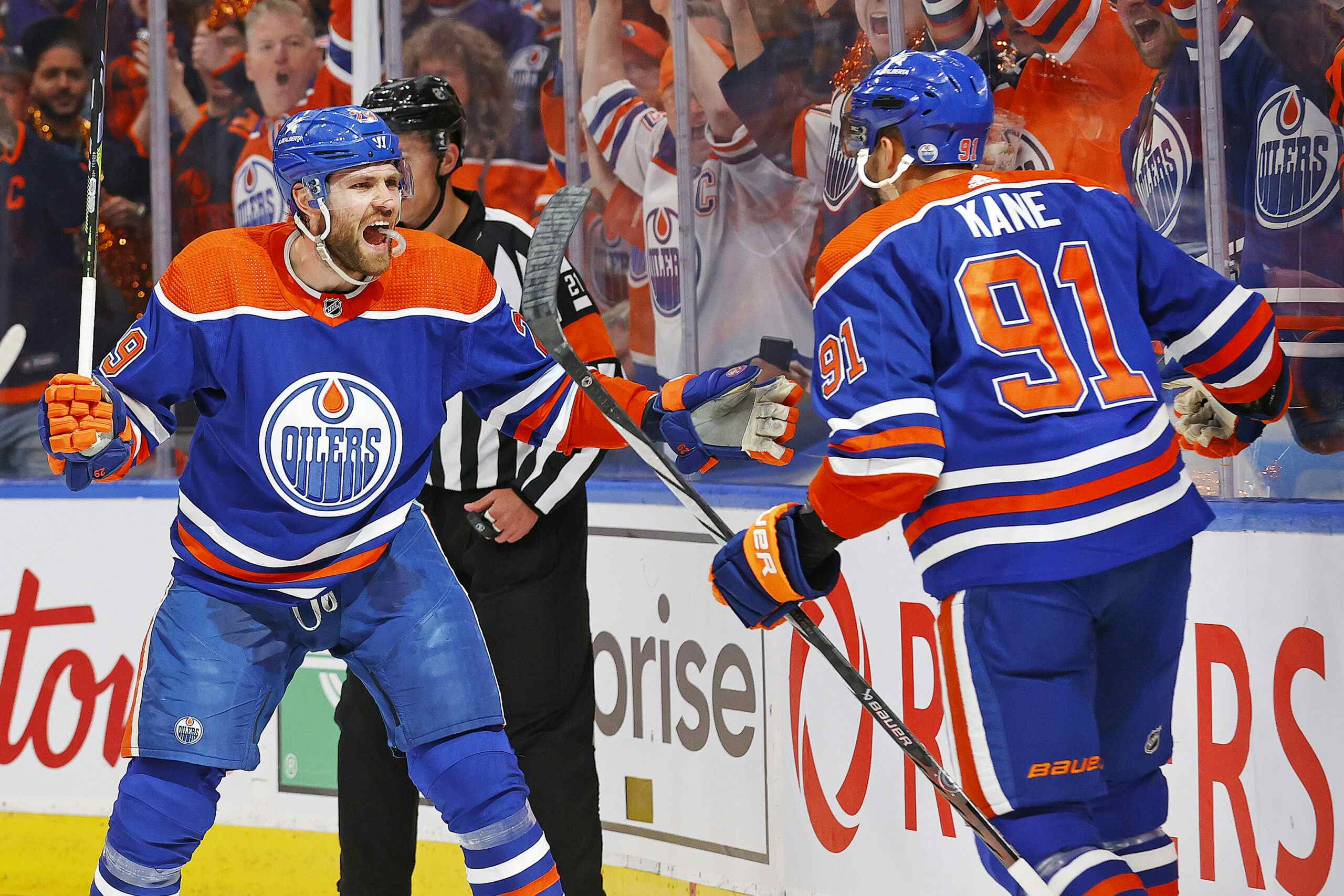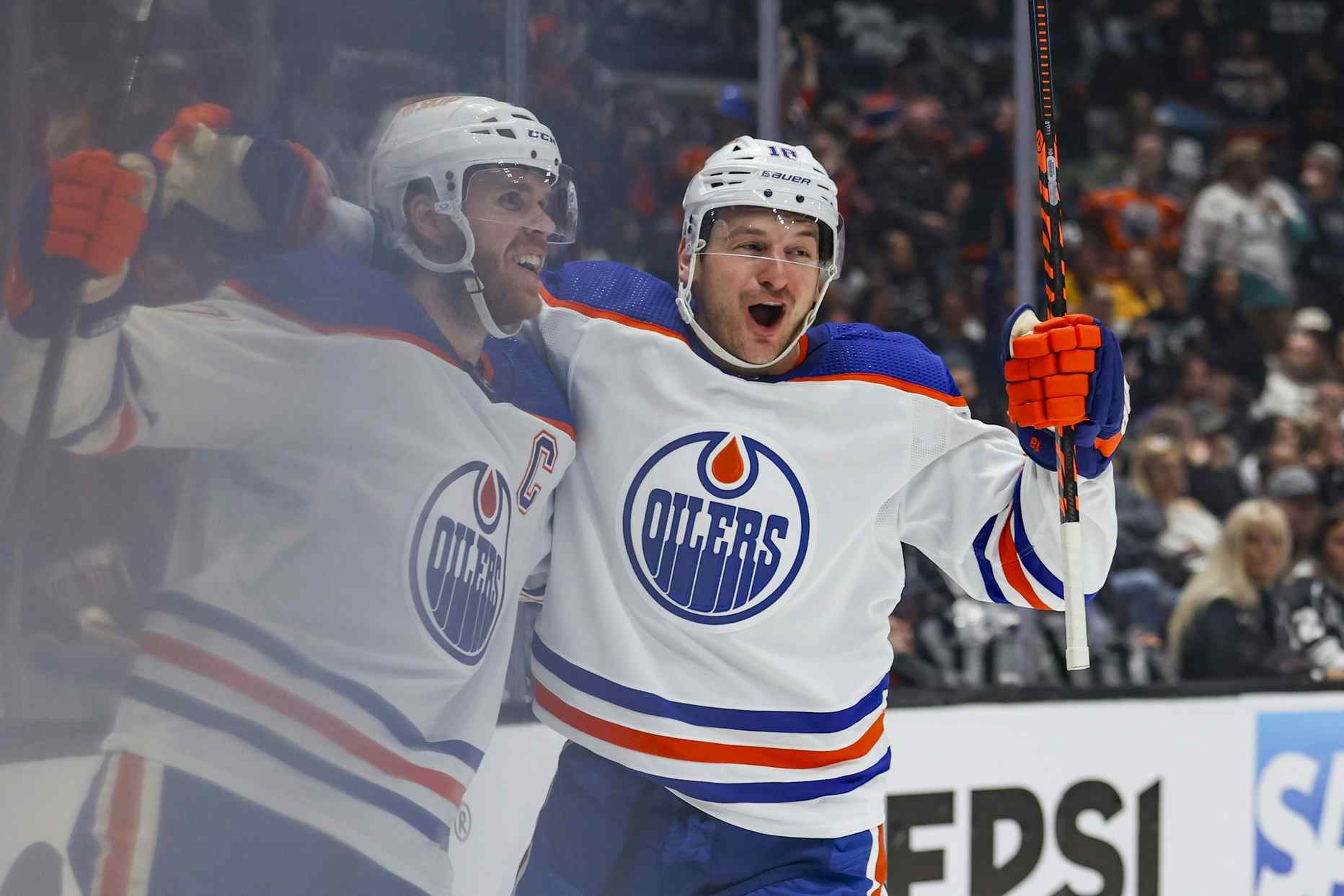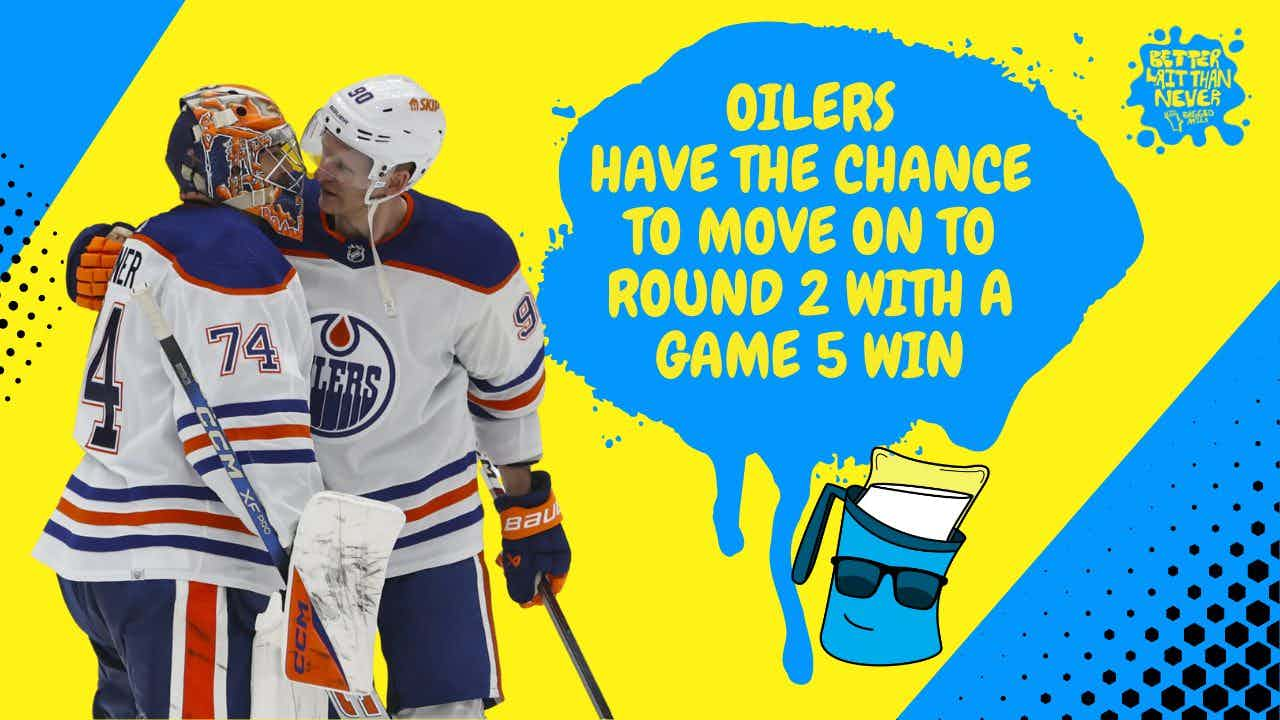Oklahoma O-K
By Lowetide
12 years ago
I’d like to think we learned a lot together last season about Oklahoma City, player development and the importance of a thriving farm team. The lessons continue, as class is in session for you and me again this season. Whereas last year, we found out about spelling, pronunciation and syllables (courtesy this young woman, God bless her–wait! he already did!), this year we’re going to find out a little bit about how successful teams handle prospects.
LORD I WAS BORN A RAMBLIN’ MAN

During Marc Pouliot’s time playing in the Oilers system, he toiled for Hamilton, Wilkes Barre-Scranton and Springfield of the AHL. Now, some of those were shared teams and Springfield was an Oiler outpost, but the number of coaches MP had during his minor league career was rather large: Don Lever, Todd Richards, Kelly Buchberger, Rob Daum. Every fall Pouliot would come to camp, be evaluated by MacT (and later Quinn) and then find a different coach waiting for him in the AHL.
Is it better to have one, consistent minor league team and an AHL coach who lasts over a period of years? Does that help player development? What would that look like? Would that kind of relationship between a parent club and minor league team bear fruit in terms of future assistant and head coaches?
WHAT DOES A SUCCESSFUL AHL GRAD LOOK LIKE?

The team Pouliot skated for in 06-07 (SWB Penguins) was a shared team. The Oilers sent Kyle Brodziak, Pouliot, Rob Schremp, Tom Gilbert, JF Jacques, Alexei Mikhnov, Tyler Spurgeon and Jeff Deslauriers to the shared team. They also had some part timers like Robert Nilsson (acquired at the deadline) and Devan Dubnyk (played 4 games) but the heart of the team included those 8 players (some of whom also played in the NHL that season). Pittsburgh was developing the following players that same year: Jonathan Filewich, Stephen Dixon, Tyler Kennedy, Ryan Stone, Connor James, Kurtis Mclean, Dan Carcillo, Noah Welch, Tim Wallace and others.
Here are the NHL GP (200+ games) for the prospects on that team since 2007 fall:
- Tom Gilbert (EDM) 325
- Kyle Brodziak (EDM) 322
- Dan Carcillo (PIT) 282
- Tyler Kennedy (PIT) 268
I’m not so much concerned with which team got the better prospects (I’d say Edmonton, on the strength of Gilbert and Brodziak being quality regulars over a longer period) as the number of "jobs won" by this minor league team in future seasons. Unlike most AHL teams, this one had the luxury of the best possible prospects from two NHL teams AND each prospect was vying for one of the 23 big league jobs on two teams. That’s 46 jobs, or put more simply Kyle Brodziak and Tyler Kennedy were never in competition with each other for NHL employment.
I define an "actual NHL player" as someone who played 200+ NHL games (goalies are a different animal). So, with a shared minor league team in 06-07–a season in which the best Oiler kids were in SWB–there was a total of TWO actual NHL players on that roster for each club. Now, there’s still time for MP, Schremp and Deslauriers (plus others) but their first bullet missed the mark and they have to be considered less than successful draft picks.
HOW MANY GRADUATE?

Four players from a single AHL team who pass 200 career games. Is this a reasonable expectation? Let’s compare two minor league teams, one an Oiler club and the other a Red Wing minor league team.
03-04 Toronto Roadrunners (100 games or more)
- Brad Winchester 324
- Jeff Woywitka 251
In Oiler terms, the 2 players (Gilbert and Brodziak) from the shared team are about right, and should give us an idea about how well the ’00s Oilers performed.
03-04 Grand Rapids Griffins (100 games or more)
- Niklas Nronwall 367
- Tomas Kopecky 339
- Jiri Hudler 318
- Matt Ellis 201
Using either the Gilbert-Brodziak season or the 03-04 Roadrunners, the Wings are superior. Remember, this was a time (05-11) that the Oilers would need all hands on deck and jobs were readily available. Detroit? Not many jobs each fall and that’s for sure.
Detroit’s minor league system delivered 4 useful players to the NHL.Do they trump the Oilers by that number every year, meaning fully 40 kids come through the Detroit system for every 20 the Oilers develop?
WHAT ELSE?

As the OKC season wears on, I’ll look at several things. Included will be the number of draft picks Edmonton graduated directly to the NHL, the number of college, junior and European free agents the team signed and finally the timeline of expected delivery to the NHL for the Oilers compared to other organziations. I’ll also look at how a team like the Red Wings handle their Euro draft picks compared to the Oilers traditional methods for development. Reason? The theory I have is that Detroit promotes their players in a more predictable, slower progression–making certain their kids play.
This is in stark contrast to the Jani Rita "sitting at the edge of the bench in the SM-Liiga" method of development the Oilers employed a decade ago (and may be experiencing currently with Oscar Klefbom). I know Edmonton has limited control over these things, but it does seem that the Red Wings kids play more often–even if it means a lower tier.
For much of this winter, I’ll compare Edmonton’s draft and development success to other teams, with Detroit being the gold standard.Hopefully we’ll end up with an idea about why the Oilers felt a need to overhaul the system, and more importantly create some reasonable expectations for how many qualified kids we should expect the team to graduate each year.
Recent articles from Lowetide





